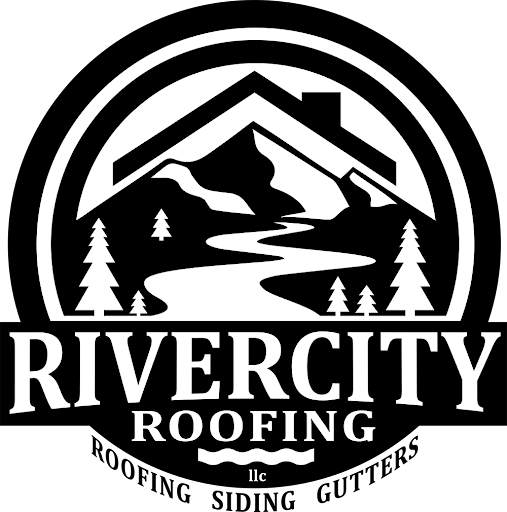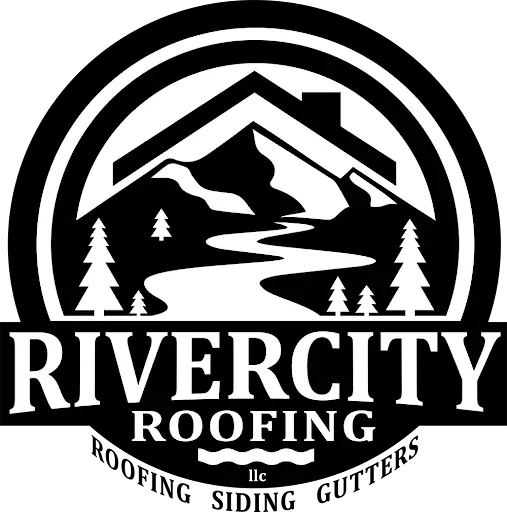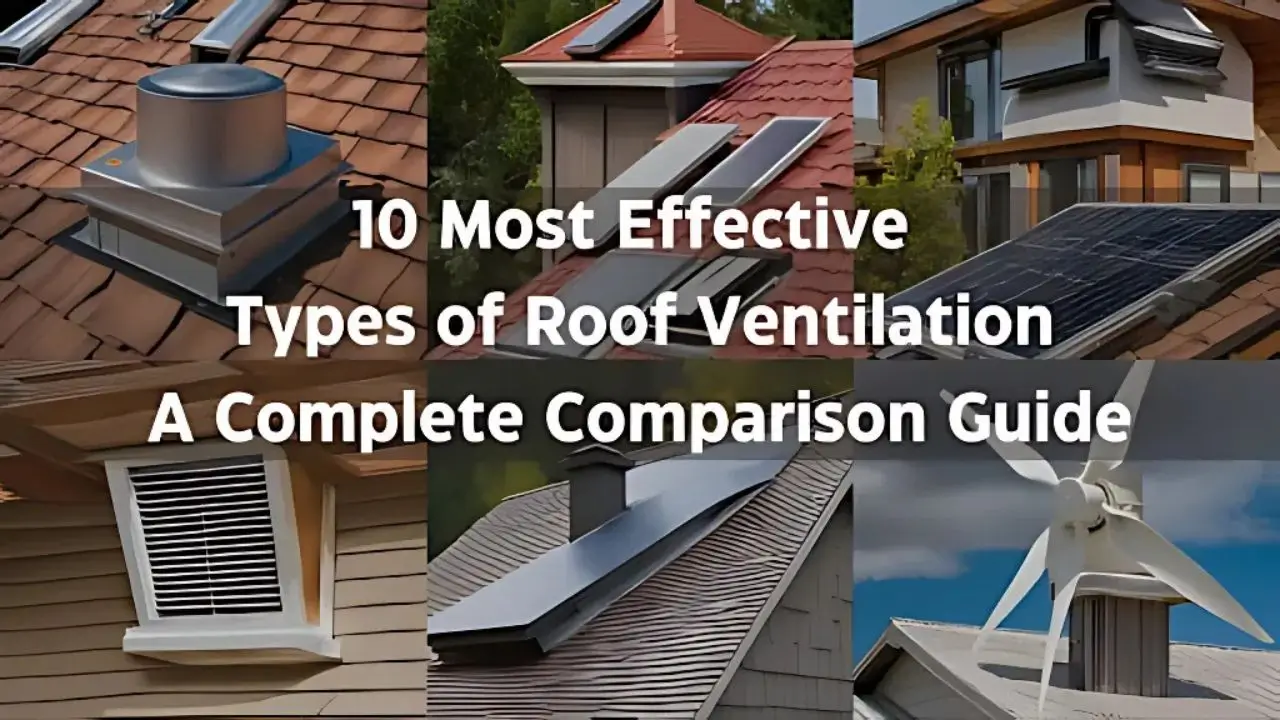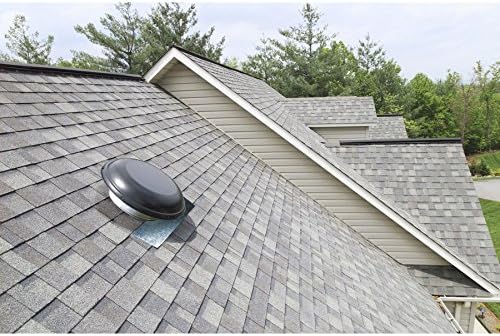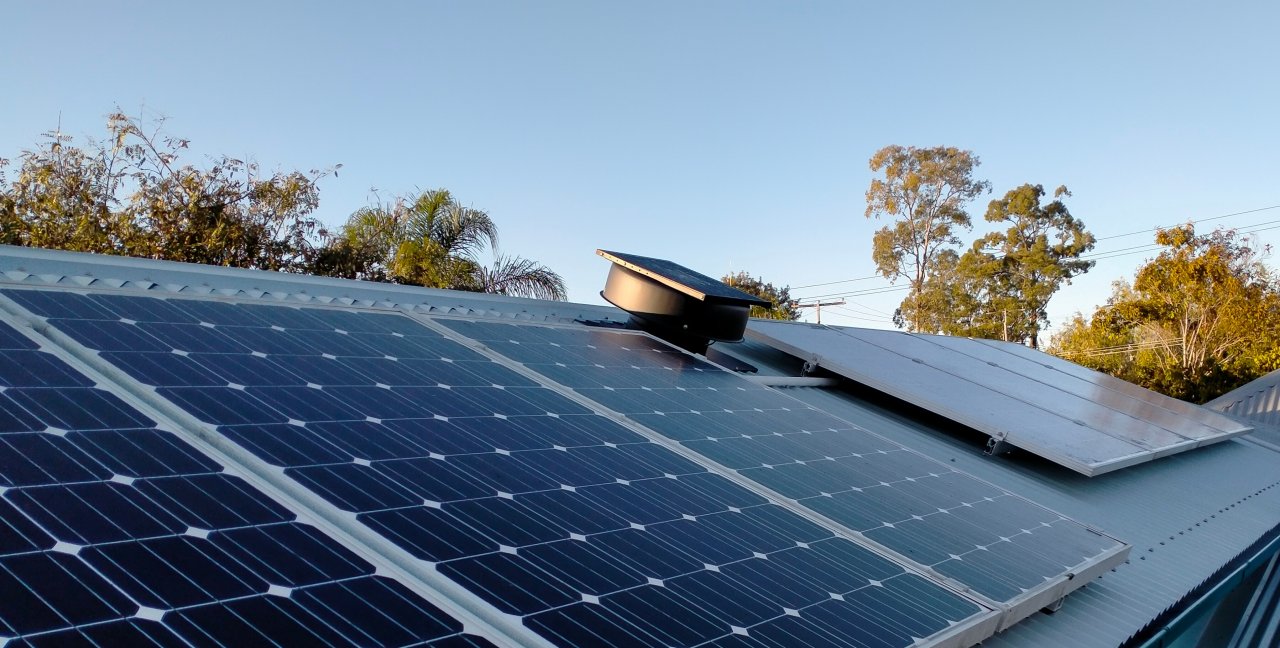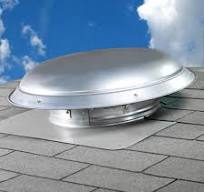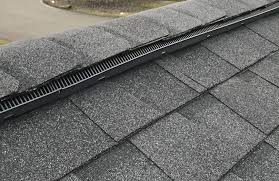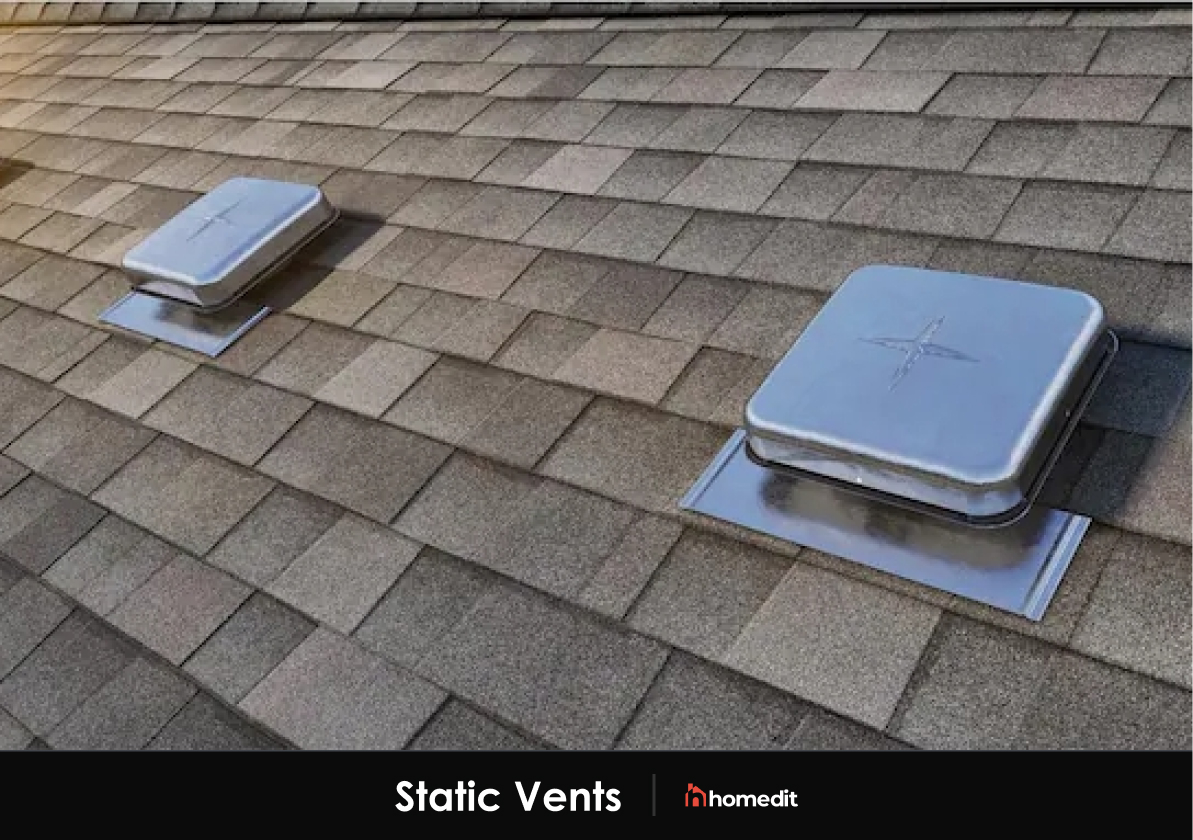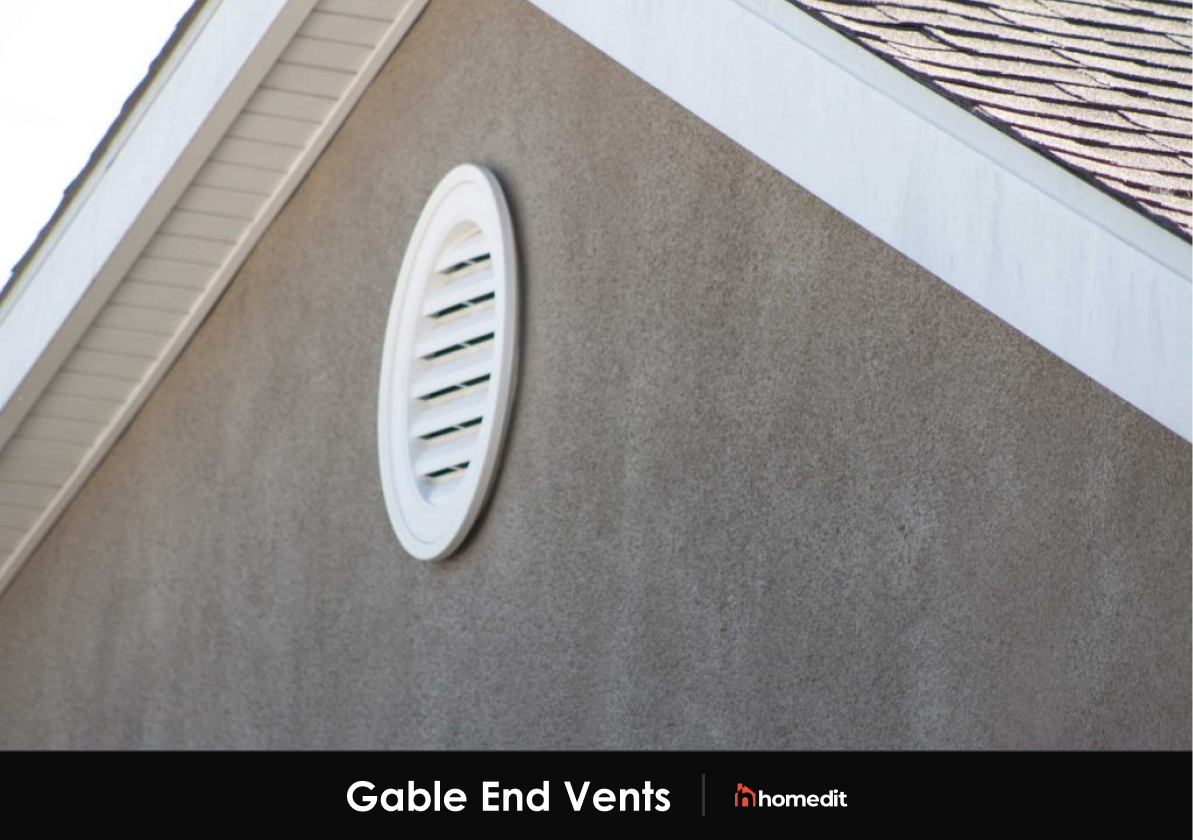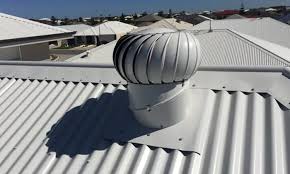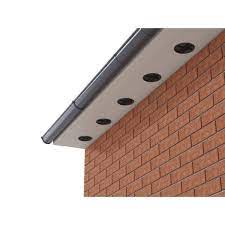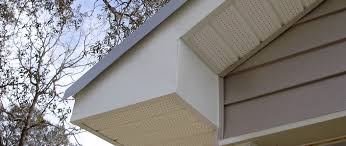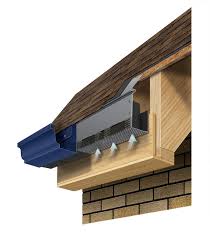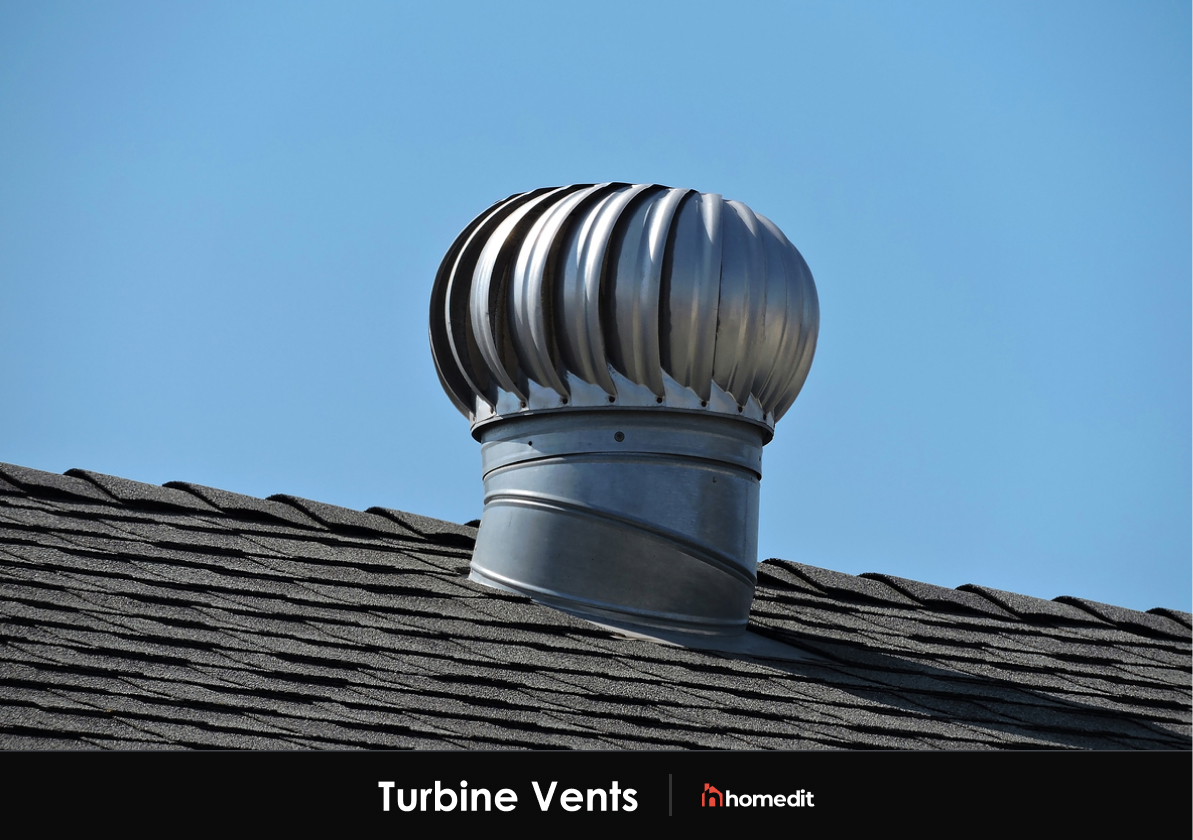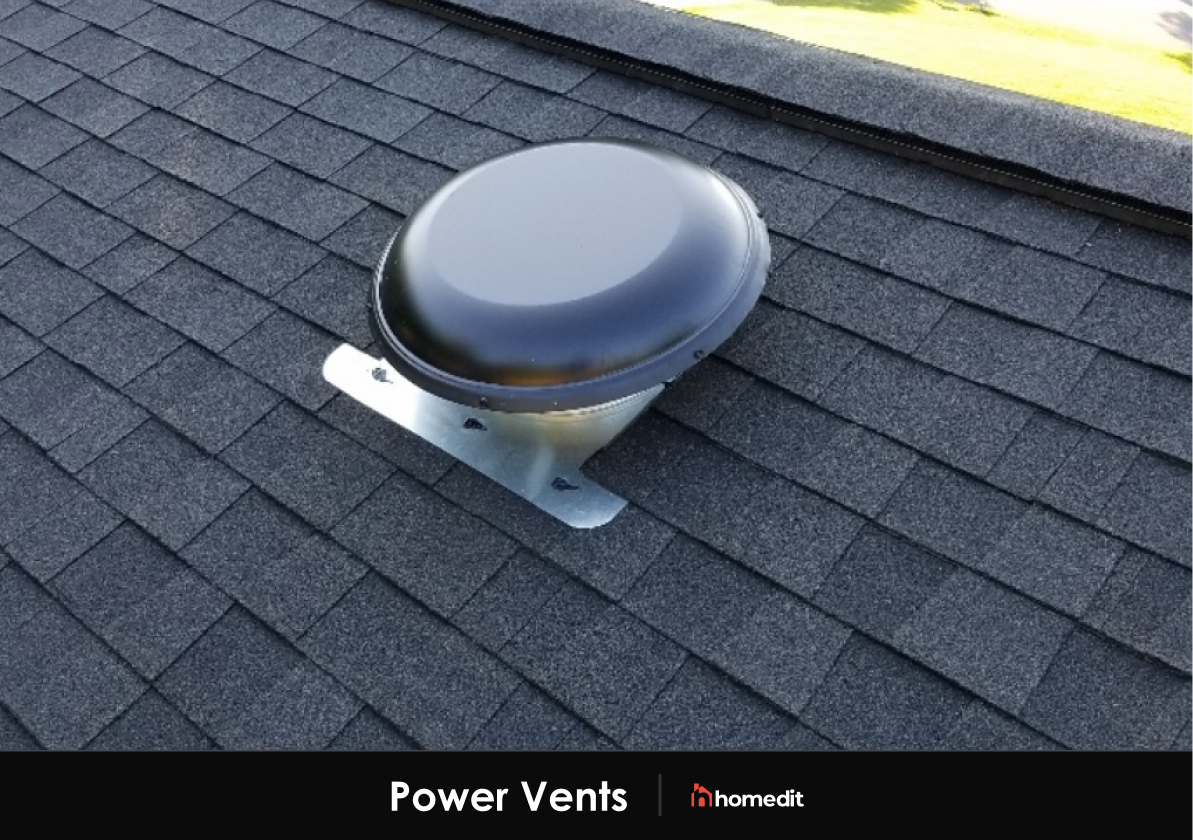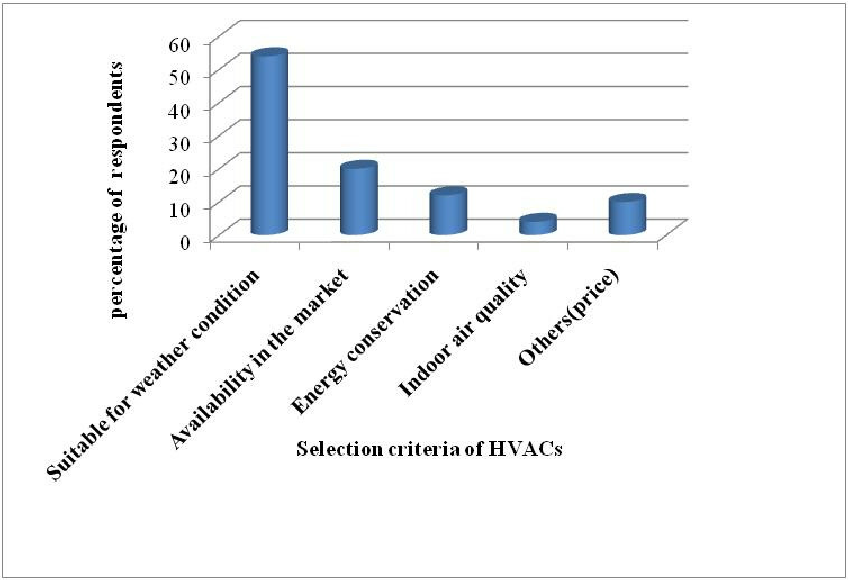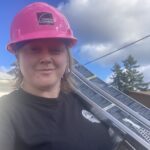Is your home’s roof ventilation system up to par? The truth is, proper roof ventilation can significantly improve your home’s comfort, air quality, and energy efficiency. Discover the ten best roof ventilation systems of 2025, ranging from classic soffit vents to innovative solar-powered solutions. Elevate your home’s energy efficiency and comfort with these top choices!.
Concerned about extreme heat, water issues, or high energy costs? You might be considering these options, which will help you make the right decision.
Understanding Roof Ventilation Systems
- Environmentally friendly and energy-efficient living standards are made possible through proper roof ventilation systems. The systems further help in moving air to maintain indoor temperatures and prevent undue burden on heating and cooling services.
- Ventilation at the roof protects the system from moisture retention and, thereby, reduces the chances of mold formation within the space, rotting of wood, and spoiling the insulation with moisture. Proper ventilation will save the structure from deterioration and will also help it last longer because there is not much need for repairs.
- Good roof ventilation is the type that allows an amount of air into the space while letting the same amount of air out, therefore allowing airflow to be continuous throughout the whole roof structure.
- Intake vents: Located at the eaves or roof edges, these allow entry of fresh air.
Exhaust vents: Located at the ridge, allow warm, humid air to escape. Together, these two components create a stable, comfortable indoor environment and protect the house against the effects of weather. - Whether it is for a new house or a new roof on something existing, investing in a good roof ventilation system will confer lifelong advantages in comfort and durability.
Free Roof Inspections. Fast. Reliable.
Is your roof ready to weather the storm? Dont risk property damage. Our free roof inspections provide expert analysis to identify potential issues before they become costly problems.
How Roof Ventilation Works
Roof ventilation works on a simple principle: cool air enters through lower vents (intake), while warm air exits through upper vents (exhaust), creating a continuous flow of air.. This natural airflow, known as the stack effect, creates continuous circulation that helps maintain optimal attic conditions.
The system is operational throughout the year, getting rid of any excessive heat that haunts the interior during the summer months and preventing moist air from accumulating during the shorter and colder days of winter. This constant ventilation diminishes the possibility of the formation of ice dams, helps keep mold development in check, and prolongs the life of roofs from premature deterioration.
Components of a Ventilation System
A complete roof ventilation system consists of two main parts:
Intake Vents: Located at the lowest part of the roof, typically in the soffit or eaves
Exhaust Vents: :Positioned at or near the roof peak to release warm air
For maximum efficiency, these must be worked in balance in ratio by the components. Industry standards recommend a balanced ventilation ratio of 1 square foot of vent space for every 300 square feet of attic floor space, with equal shares of intake and exhaust vents.
Active vs. Passive Systems
Ventilation systems fall into two categories:
Active Systems: :Use powered components like electric or solar-powered fans to force air movement
Passive Systems: :Rely on natural forces like wind and thermal effect to create airflow
There are distinct advantages with respect to each type of ventilation system. Passive systems tend to have lower maintenance and running costs, while active systems assure better-quality ventilation throughout the year, irrespective of climatic conditions. .
Active Roof Ventilation Solutions: Boost Airflow and Maintain Optimal Attic Conditions
Active Roof Ventilation Solutions offer a dynamic way to control attic temperatures and moisture levels. These powered systems use mechanical components to forcefully move air through your attic space, providing consistent ventilation regardless of natural weather conditions.
Electric-Powered Vents
Electric-powered vents provide effective ventilation by using your home’s electrical supply. A thermostat activates them when the attic temperature exceeds a certain level, moving about 1,500 cubic feet of air per minute to maintain comfort.
Installation should be performed by skilled professionals due to the necessary wiring. While these vents are reliable, they can increase energy costs and require regular maintenance to keep the motors and moving parts functioning properly.
Solar-Powered Vents
Solar-powered ventilation systems combine efficiency with environmental awareness by using solar panels to power their motors, eliminating electricity costs. They can operate in low-light conditions and often include backup batteries for nighttime use.
These systems are particularly highly efficient in sunny climates where they can maximize solar exposure. Installation is usually simpler than electric vents since no wiring is required, but proper positioning is essential for optimal performance.
Power Attic Ventilators
Power attic ventilators provide a flexible solution, functioning on either electricity or solar power. Equipped with adjustable thermostats and humidity sensors, they offer customized ventilation control and are powerful in larger attics.
These systems are beneficial in regions with extreme temperature changes, quickly adapting to conditions. However, ensuring proper intake ventilation is essential to avoid drawing conditioned air from your living space.
Passive Ventilation Options: Energy-Efficient Solutions for Your Home
Passive ventilation systems work with natural airflow patterns to regulate attic temperature and moisture levels. These systems require no electricity and operate continuously through the principles of thermal convection and wind power.
Ridge Vents
Ridge vents are located at the peak of your roof to provide efficient exhaust ventilation. They allow warm air to escape through a continuous opening, and many feature external baffles that enhance air extraction by creating low pressure above the vent, even in light wind.
Static Box Vents
Static box vents, also known as roof louvers, are installed in strategic locations near the roof ridge. These simple yet effective vents have a low-profile design that blends seamlessly with your roofline. To ensure proper ventilation, multiple box vents are usually required, and their placement depends on the square footage of your attic.
Gable Vents
Gable vents, located in the exterior walls of your attic, enhance cross-ventilation when paired with intake vents. They work best in areas with consistent winds and are effective in smaller attics, but their performance may decrease in complex roof designs or irregular wind patterns.
Wind Turbines (Whirlybirds)
Wind turbines utilize wind energy to expel hot air from attics. When properly installed and maintained, they can ventilate about 1,200 square feet under ideal conditions, making them cost-effective for many homes.
Passive ventilation options like ridge vents and wind turbines offer energy-efficient, maintenance-free solutions for effective attic airflow in most residential applications.
Intake Ventilation Systems
The intake ventilation is important because it allows you to preserve a healthy attic environment. These systems basically serve as the complete roof ventilation of allowing fresh air entry and starting the most elementary air movement process.
Soffit Vents
Soffit vents, located under the eaves of your roof, can be continuous or individual. Continuous vents run the length of the eaves, while individual vents are spaced apart. Positioned at the lowest point of the roof, these vents effectively draw cool air into your house.
Drip Edge Vents.
Drip edge vents are ideal for houses without soffits. Installed in the roof’s drip edge, they enhance air intake while staying discreet. These vents integrate well with ridge vent systems to ensure a continuous flow of natural air from the foundation to the roof.
Fascia Vents
These vents fit between the fascia and gutter system, improving the appearance of homes with architectural limitations. They blend in seamlessly while providing continuous airflow, helping to prevent ice dams by maintaining a consistent roof temperature in colder weather.
Turbine Vents
Wind-driven turbine vents, or whirlybirds, feature aluminum or galvanized steel turbines that spin with wind movement. This rotation creates a vacuum effect, pulling hot air from the attic space. Even in light breezes, these components can effectively ventilate up to 1,200 square feet of attic space.
Power Vents
Electric-powered exhaust vents use motors to forcefully expel hot air. These components often include thermostats and humidistats for automated operation, making them particularly consistent in areas with variable wind conditions.
Cost factors of various vent types
Installation costs can vary by region, with areas in the West or Northeast potentially seeing slightly higher prices due to climate conditions or local labor rates.
| Ventilation Type | Installation Cost (USD) | Annual Operating Cost ( USD) | Annual Maintenance Cost ( USD) | Effectiveness | Ideal Usage |
|---|---|---|---|---|---|
| Most homes; integrate seamlessly with roofing | $300–$700 | $50–$150 | $50–$100 | Highly effective; consistent airflow | Areas with extreme temperatures |
| Solar-Powered Vents | $500–$1,500 | None | $20–$50 | highly efficient in sunny climates | Environmentally conscious homeowners |
| Power Attic Ventilators | $400–$1,200 | $30–$150 | $50–$100 | Highly effective; adaptable airflow | Large attics or regions with extreme climate shifts |
| Ridge Vents | $400–$700 | None | Minimal to none | Continuous airflow; energy-free | Most homes; integrates seamlessly with roofing |
| Static Box Vents | $100–$400 per vent | None | Minimal to none | Effective with multiple units | Homes requiring additional exhaust points |
| Gable Vents | $100–$300 per vent | None | Minimal to none | highly efficient in windy areas | Homes with simple roof designs |
| Wind Turbines (Whirlybirds) | $150–$350 per turbine | None | $20–$50 | Effective; wind-driven | Homes with consistent wind patterns |
| Soffit Vents | $2–$5 per linear foot | None | Minimal | Essential for air intake | Houses with eaves |
| Drip Edge Vents | $3–$8 per linear foot | None | Minimal | Discreet and effective | Homes without soffits |
| Fascia Vents | $8–$12 per linear foot | None | Minimal | Prevents ice dams | Homes in colder climates |
| Turbine Vents | $150–$350 per turbine | None | $20–$50 | Effective for smaller attics | Cost-conscious homeowners |
| Power Vents | $300–$800 | $50–$150 | $50–$100 | consistent; automated airflow | Variable wind conditions or extreme temperatures |
How to choose a ventilation system?
When choosing a roof ventilation system, consider several factors to ensure optimal airflow and prevent moisture damage and heat buildup in your home.
Climate Considerations
Local weather patterns are key to choosing effective ventilation. In hot climates, focus on systems like ridge or power vents for heat removal. In humid areas, continuous ventilation helps prevent moisture buildup.
Roof Design and Architecture
Your roof’s design influences ventilation options. Steep-pitched roofs work well with ridge vents, while limited space may require turbine vents. Consider the roof’s layout when selecting vents.
Installation and Maintenance Requirements
Balance initial installation costs with long-term maintenance. Powered vents provide better performance but require regular upkeep, while static vents may need more units but less maintenance.
Installation and Maintenance Tips
Always hire a certified roofing contractor familiar with local building codes and conditions. River City Roofing’s professionals are trained to handle your roof’s specific needs in the Pacific Northwest
Regular Maintenance Schedule
Conduct biannual inspections in spring and fall. Check for debris, damaged covers, and functionality of mechanical parts. Clear blockages that affect ventilation.
Safety Considerations
Ensure all safety protocols are followed. If you’re unsure about the right steps, always consult with a licensed professional to avoid any risks, especially in areas with heavy snowfall or frequent storms.
Struggling with poor roof ventilation? Contact River City Roofing today for professional installation and maintenance of top-quality roof ventilation systems!. Our trained professionals will help provide solutions to keep your house cool, energy efficient, and well-protected throughout the year. Contact us now for a free consultation.
Call : +1 503-970-5005
Mail: [email protected]
References
